#marguerite d'anjou
Text
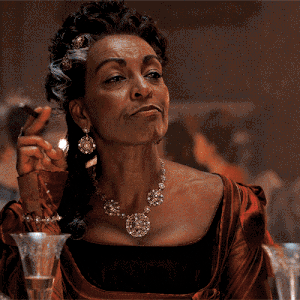
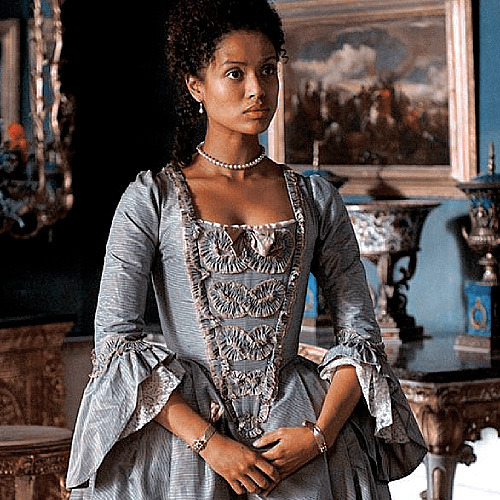
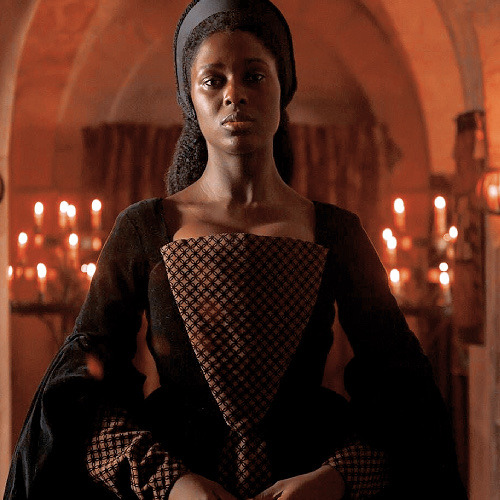


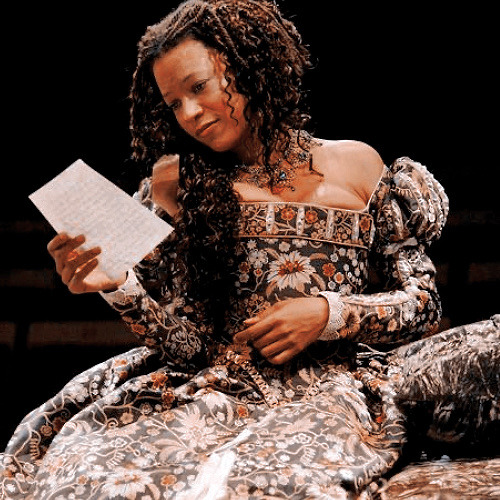

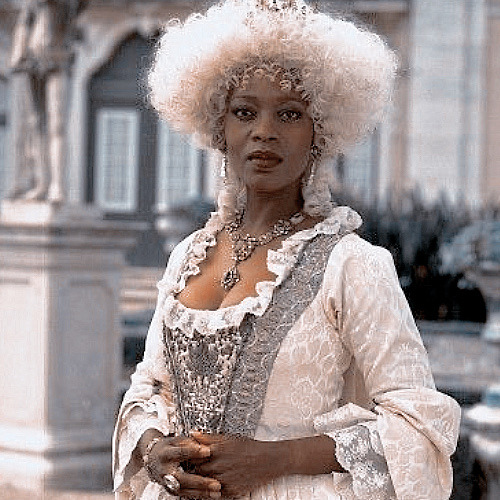

Black Women in Period Costumes
#genuinely love this song#saw that pic of sophie as margurite and here we are#bridgerton#bbc merlin#anne boleyn#the spanish princess#the hollow crown#queen charlotte#lady danbury#guinevere pendragon#marguerite d'anjou#gulliver's travels#alfre woodard#belle 2013#gugu mbatha raw#lina de cardonnes#stephanie levi-john#golda rosheuvel#adjoa andoh#sophie okonedo#angel coulby#jodi benson
1K notes
·
View notes
Text

23 March 1430: Marguerite d'Anjou is born at Lorraine, France. She later became Queen of England by marrying King Henry VI.
#house of lancaster#happy birthday to margaret of anjou#marguerite d'anjou#margaret of anjou#queen of england#house of anjou#plantagenet dynasty
2 notes
·
View notes
Text
Expansion of the royal domain
The way in which the kingdom was ruled in its different provinces had always varied according to the degree that power had been permanently or temporarily devolved to apanage princes and great nobles or that representative assemblies continued to function. It is therefore axiomatic that there was no 'system of government' in the France of the Renaissance. The question is: was there a tendency for the kingdom to become more centralised? R. Bonney has wisely cautioned against the over-use in French history of the term 'centralisation', a term coined in 1794. The main distinction drawn in the early modern period, as Mousnier made clear, was that between the king's 'delegated' and 'retained' justice, the latter covering all the public affairs of the kingdom in which the crown was supreme and the former the private affairs of his subjects. No one would pretend, however, that a clear line of division was ever established between the two.
If we consider the case of the apanages and' great fiefs, for instance, the century from the reign of Louis XI is usually considered definitive in their suppression. In 1480, there were around 80 great fiefs. By 1530 around half of these still existed. The rest were in abeyance or held by members of the royal family. Within the royal house, the apanage of Orleans was reunited to the crown on the accession of Louis XII, although thereafter used periodically for the endowment of the king's younger son, permanently so after the reign of Louis XIV. The complex of territories held by the Bourbon and Bourbon-Montpensier families fell by the treason of the Constable in 1523. Burgundy (and temporarily Artois and Franche-Comté) were taken over in 1477. Among the great fiefs, the county of Comminges was united to the crown on the death of count Mathieu de Foix in 1453, the domains of the Armagnacs (such as the county of Rodez) were confiscated on the destruction of Jean V at Lectoure in 1473. They found their way by the reign of Francis I into the hands of the royal family, through the marriage of Jean V's sister to the count of Alençon. The last Alençon duke, Charles, married Francis I's sister, Marguerite of Angoulême, and Alençon's sister, Françoise, married duke Charles of Vendôme, grandfather of Henry IV. Brittany was acquired through war and marriage alliance in the 1490s, Provence and the domains of the house of Anjou after the death of king René and then of Charles d'Anjou in 1481. The archives of the Chambre des comptes of Anjou for the early 1480s give ample evidence of the king's determination to exploit his new acquisition as soon as possible.
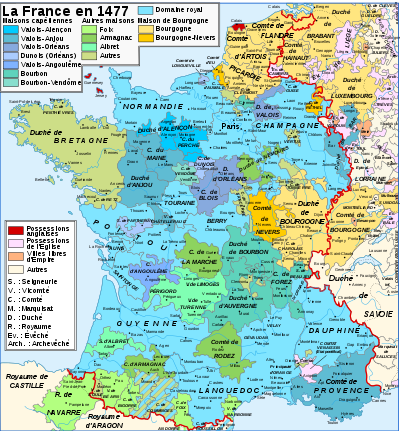
It should not be assumed that the crown pursued a consistent determination to lay hands on all these territories and rule them directly. There was usually a more or less lengthy period of adjustment to a new status. Some apanages and territories taken over by Louis XI were absorbed into the general administration of the rest of the kingdom. This was clearly the case with Burgundy and Picardy-Artois in 1477, both of them in the area under the jurisdiction of the Parlement of Paris. Yet even here, Louis XI had to tread warily in winning over the support of the regional nobility and discontent was apt to break out until the end of the fifteenth century. On Louis's death, for instance, a rising occurred in Picardy at Bertrancourt near Doullens, with cries of 'there is no longer a king in France, long live Burgundy!' The absorption of Artois proved to be an impossible undertaking and had to be renounced in 1493.
Elsewhere, absorption of apanages that were distant from the centre of royal power left affairs locally much as they had been before. The little Pyreneen county of Comminges was governed much as it had been under its counts, with privileges confirmed by Charles VIII in 1496. Only with the work of royal commissioners in the tax-assessing process in the 1540s, the first time an outside power had actively intervened in the affairs of the local nobility, did this begin to change. Auvergne, an apanage raised to a duchy in 1360, was confirmed to the Bourbons in 1425 on condition that their whole domain became an apanage. The duchy was confiscated from the Constable in 1523 but transferred by the king to his mother in 1527 and only absorbed into the royal domain in 1531. Even after that, it formed the dower of Charles IX's queen and then part of the apanage of François d'Anjou, his brother. In the contiguous county of Forez, also confiscated in 1523, little local opposition emerged to the change of regime; although the local chambre des comptes was shortly suppressed, most local judicial officials, along with the entire administrative structure, were retained. Except for a few partisans of the Constable, it seems that there was no great upheaval. Louise de Bourbon, the Constable's sister and princess of La Roche-sur-Yon, demanded a share of the inheritance - Forez, Beaujolais and Dombes. Beaujolais and the principality of Dombes eventually went to Louise's son, Montpensier.
The county of Auvergne, enclaved in the duchy, was held by the duke of Albany in his wife's name, and was then inherited from the last of the La Tour d'Auvergne family by Catherine de Medici. Catherine brought it to the crown by her marriage with Henri II in 1533 but she continued to administer it as her own property. She left it to Charles IX's bastard, Charles de Valois, but her daughter Marguerite made good her claim to it in 1606 and it only entered the royal domain definitively when she willed it to Louis XIII.
After her marriage to Charles VIII in 1491, Brittany was administered as her own property by queen Anne, technically still duchess but in reality sharply circumscribed in her power, until her husband's death restored some of her freedom of action in 1498. Having already established friendly relations with Louis XII when he was still duke of Orleans, she was prepared to accept his offer of marriage after the annulment of his marriage to Louis Xl's daughter, Jeanne, had been agreed. The contract which accompanied the marriage in January 1499 tied the duchy to the crown provisionally on condition that it always passed to the second son of the marriage, while in the absence of issue the duchy was to revert to Anne's heirs on her own side. Anne was able to act rather more independently during her marriage to Louis XII though the conditions of the contract were not observed. On her death Brittany was inherited by her elder daughter Claude, wife of Francis I, who transmitted her rights to her son the dauphin. The queen had, however, transferred the government of the duchy to her husband in 1515 and he continued to rule it in the name of his son François on Claude's death, entitling acts as 'legitime administrateur et usufructuaire' of his son's property. When the dauphin's majority in 1532 brought the question of the imminent personal union of the duchy to the kingdom to the foreground, it was arranged for the Breton estates to 'request' full union with France but on terms which guaranteed Breton privileges and maintained the principle that the dauphin would be duke of Brittany. Only in 1536, on the death of the dauphin, was the union with the kingdom complete and no more dukes were crowned at Rennes. What had been done was the annulment of the Breton succession law, which included females, in favour of the French royal succession law. Late in 1539, it was decided that the new dauphin Henri would have the government of Brittany 'to govern as he pleases', though the documents were delayed by the king's illness. A 'Declaration' transferring Brittany to Henri was drawn up in 1540. In practice, the government of the duchy seems not to have been much changed.
The lands of the house of France-Anjou posed a complex problem. René of Anjou, titular king of Jerusalem, Sicily, Aragon and Naples, was count of Provence in his own right, of Maine and Anjou as apanagiste and Guise by succession. As early as 1478, Louis was scheming to ensure that king René, who had no surviving son, did not leave his territories of Anjou, Provence and Bar to his grandson, René II of Lorraine, warning the general of Languedoc that his region would be 'destroyed' if Provence fell into other hands. On the 'good' king's death in 1480, most of his domains passed to his cousin Charles IV d'Anjou, count of Maine, who died childless in 1481, when Maine and Anjou reverted to the crown, thereafter to be granted out to members of the royal family such as Louise of Savoy. At the same time Provence was acquired by Louis XI by Charles IV's will and the county of Guise was disputed between the houses of Armagnac-Nemours, Lorraine (heirs of René I of Anjou and successors as titular kings of Jerusalem and Sicily) and Pierre de Rohan, marshal de Gié. From 1481, however, the king ruled in Provence as 'count of Provence and Forcalquier'. The lord of Soliès, Palamède de Forbin, who had persuaded Charles d'Anjou to leave the county to the king, was rewarded with the post of governor. The major change came in 1535 with the edicts of Joinville and Is-sur-Tille on the government of Provence, limiting the scope of the old institutions of the Estates and the Sénéchal and increasing that of the Parlement of Aix in justice and of the royal governor in administration. Curiously, Francis I was reported as having said that he felt an obligation to 'ceux de Guise', the house of Lorraine in France, since Louis XI had despoiled them of their inheritance of Provence and Anjou.
The major surviving complex of apanage lands by the middle of the sixteenth century was that held by Antoine de Bourbon, now first prince of the blood and next in line to the throne after the immediate royal family, and his wife Jeanne d'Albret. These involved a group of territories held by different tenures. The Albret inheritance brought the titular kingship of Navarre with a small fragment of the ancient kingdom of Navarre north of the Pyrénées that was held in sovereignty. In the counties of Foix, Albret and Béarn, the family held effective sway under only the most distant royal sovereignty, though Louis XI saw fit to pose as the protector of the young François-Phébus in 1472. In 1476, he sought to revise local tariffs against Albret interests and in 1480 attempts to levy a taille for the gendarmerie there stirred up a rebellion. In western France, the duchy of Vendôme, erected as late as 1515 to detach it from dependence on the duchy of Anjou, was held as an apanage under rather closer royal supervision. In the north, the complex of lands administered from La Fère-sur-Oise and centring the county of Marle was held directly of the king or of the Habsburg ruler of the Netherlands, rendering the family, to some, unreliable. Practical power stemmed from the holding of the governorships of Picardy and of Guyenne by the Bourbons and Henri d'Albret.
Other independent territories persisted, such as the vicomté of Turenne, where the vicomte (of the La Tour d'Auvergne family) ruled with regalian rights until the eighteenth century, could raise taxes, coin money, make war and render justice as a limited monarch in conjunction with very active local estates.
David Potter - A History of France, 1460-1560- The Emergence of a Nation State
#xv#xvi#david potter#a history of france 1460 1560: the emergence of a nation state#louis xi#louis xii#charles iii de bourbon#mathieu de foix#jean v d'armagnac#françois i#charles iv d'alençon#marguerite d'angoulême#rené d'anjou#charles viii#charles ix#élisabeth d'autriche#louise de bourbon#gilbert de montpensier#catherine de medici#house of la tour d'auvergne#charles de valois#louis xiii#anne de bretagne#jeanne de france#claude de france#charles iv d'anjou#louise de savoie#house of guise#capetian house of bourbon#antoine de bourbon
4 notes
·
View notes
Text
Margaret Stewart, "Margaret of Scotland" "Dauphine of France" was born on December 25th 1424 in Perth.
Margaret had married Louis XI son of Charles VII and Maria d'Anjou on 24 June 1436 in Tours Cathedral. As you would expect this marriage had more about the Auld Alliance than any love story,.
Margaret sailed for France in March 1436, and she was escorted by some of the greatest Scottish nobles. She entered Poitiers, where a child dressed as an angel crowned her with a wreath of flowers. She was just a child herself, aged only 11, he husband, Louis in Tours was 13, they wed on 25 June 1436 and she became the Dauphine of France. The marriage of course was not consummated right away and she was taken into the household of the French Queen, Marie of Anjou, where she reportedly saw very little of her husband, whose aversion of her was remarked upon by contemporaries, the French knew her as Marguerite d'Écosse
She is said to have devoted much of her time to writing, and she was criticised by doctors for it, who claimed that her “poetic overwork” may have attributed to her death. Unfortunately, none of her works survive to this day. Reportedly, Louis ordered that all her papers be destroyed.
She was treated with kindness by King Charles VII and his wife, and when she died on 16 August 1445, there was a great outpouring of grief. Her two sisters, Eleanor and Joan, were on their way to France at the invitation of Marie of Anjou, but they arrived just a few days after Margaret’s death.
An unidentified Scot wrote of Margaret,
"Alas that I should have to write what I sadly relate about her death…I wrote write this saw her every day, for the space of nine years, alive and enjoying herself in the company of the King and Queen of France. But then…I saw her, within the space of eight days, first in good health and then dead and disembowelled and laid in a tomb at the corner of the high altar, in the cathedral church of Châlons."
She is buried in Saint-Laon church in the French department of Deux-Sèvres, a canopy over her tomb is all that remains after the destruction during the French Revolution, a modern floor plaque and grill have been added her coffin can be seen though the grill.
There is a lot more history to read about the marriage and her life here from the excellent Freelance History Writer https://thefreelancehistorywriter.com/…/margaret-stewart-o…/

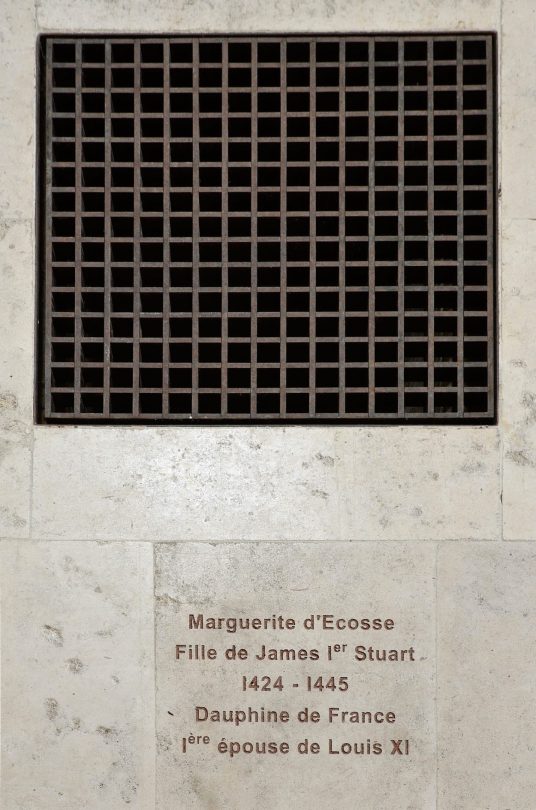
15 notes
·
View notes
Text
anyone else just not give a shit about marguerite d'anjou or elizabeth woodville
#(ooc: i'm an unspeakable of the oscar wilde sort)#me reading the parts from their pov in sunne and splendour like great! lets go back to richard now! LMAO
4 notes
·
View notes
Note
https://at.tumblr.com/navree/ive-heard-that-grrm-has-based-tdod-on-the-anarchy/ejgsdhmtceax
If grrm just has made the dance between Viserys and Rhaenys it would be much mor similar to the Anarchy , because in this situation we will have Cousins against each other, also Viserys is very similar to Stephen and Rhaenys like Matilda is the only child and heir of her father . I've never understand why grrm decided to base Aegon on Stephen, they're nothing alike
Aegon ii could be similar to Henry vii or prince hal but Stephen? I doubt it
I think he just read about a situation and then mapped his own characters onto it, while also further muddying the waters. Tyrion is likely meant to be vaguely analogous to Richard III in the main series, but there's some key differences in the story itself (Richard III was certainly not Marguerite d'Anjou's brother and the situations were incredibly different), as well as the fact that Tyrion and Richard are nothing alike personality wise. I think that's the extent of his "basing", especially when it came to Westeros's fictional history, which is a lot less detailed than the series and required less character development because it's an in-universe history book, not a proper narrative.
#personal#answered#anonymous#the tyrion and richard thing is something i can be incredibly motor mouthed on
2 notes
·
View notes
Text
Billet spécial n°1 - Les hôtels particuliers de l'Île Saint-Louis

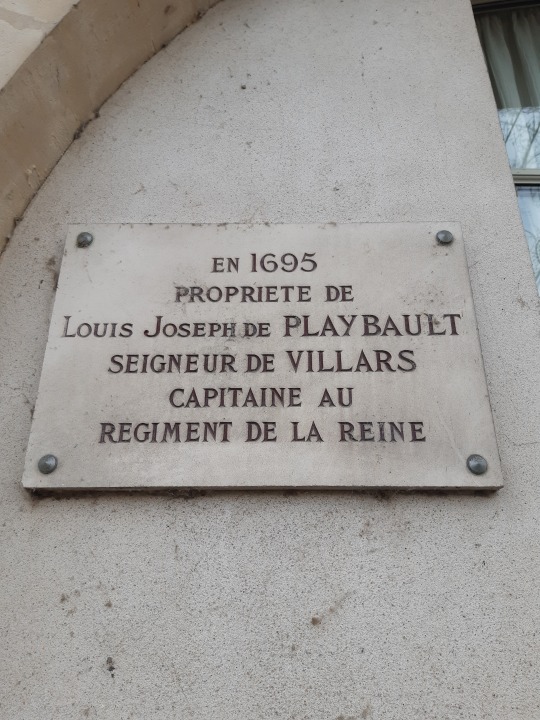

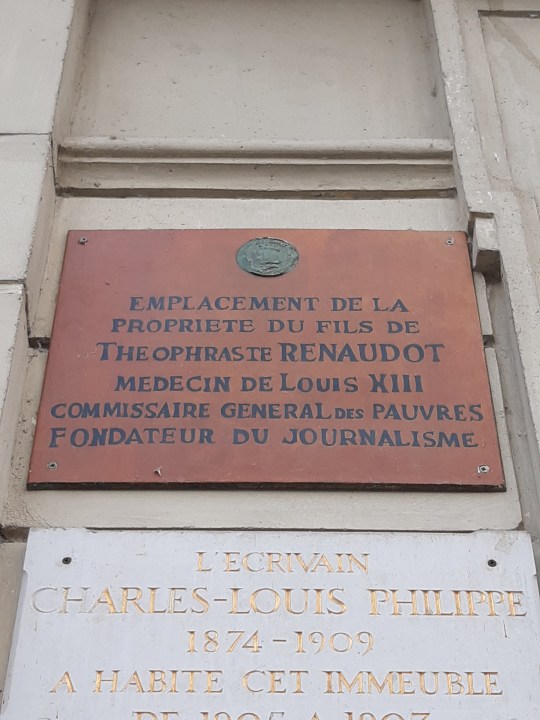
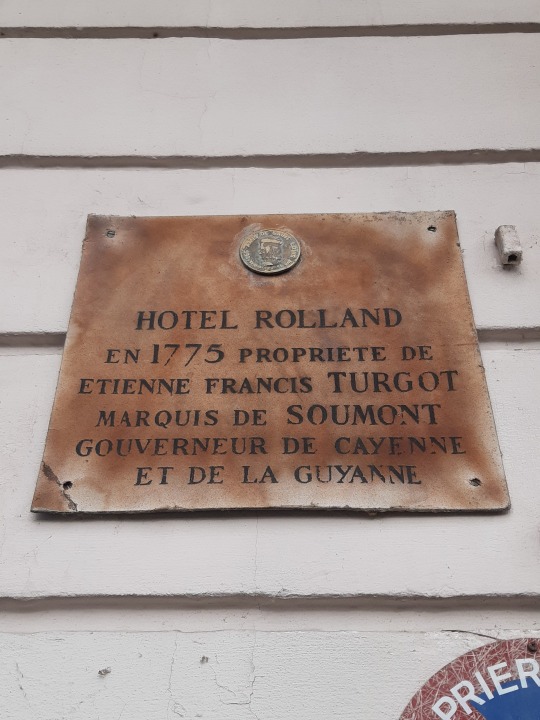
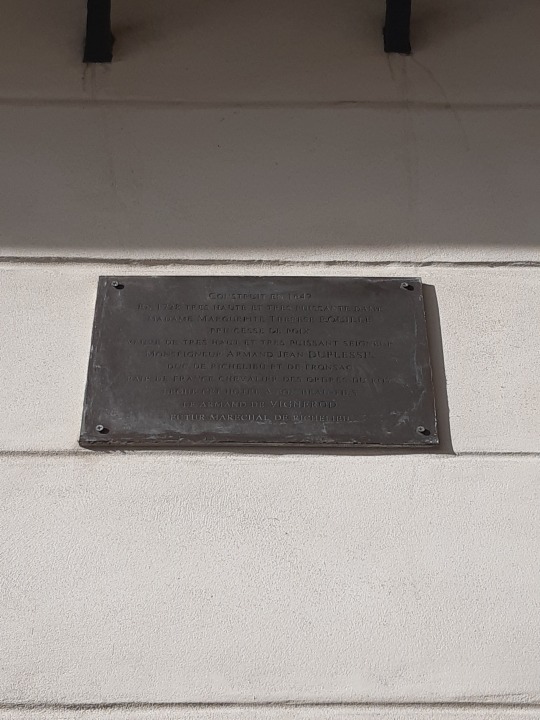
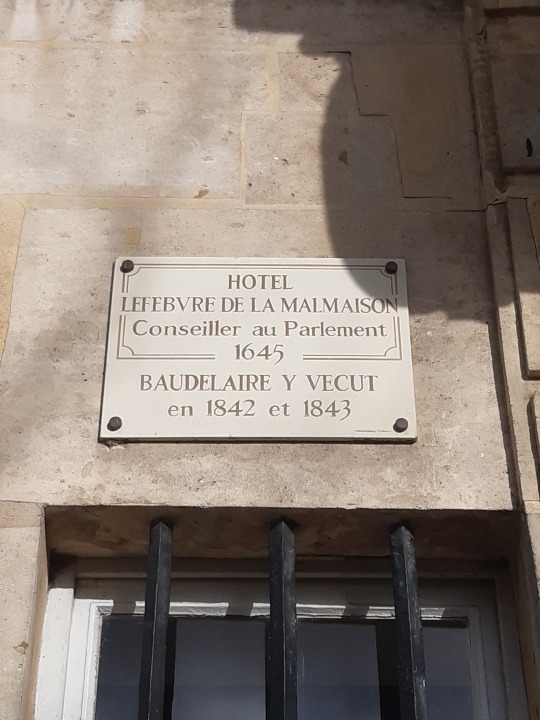


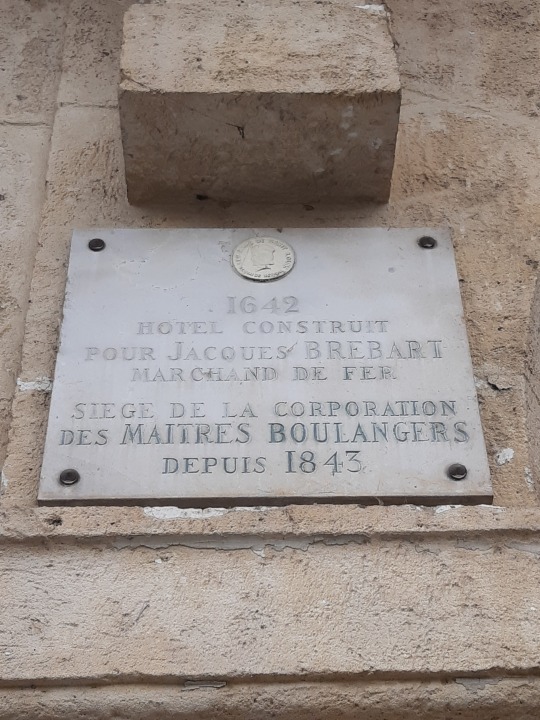
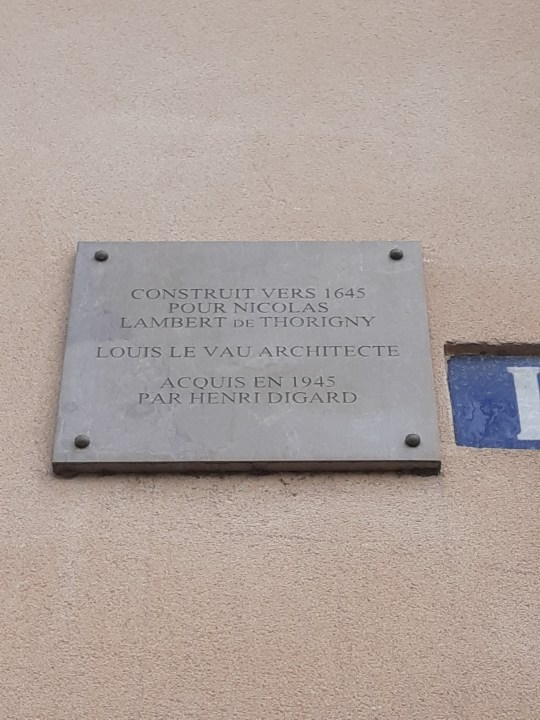
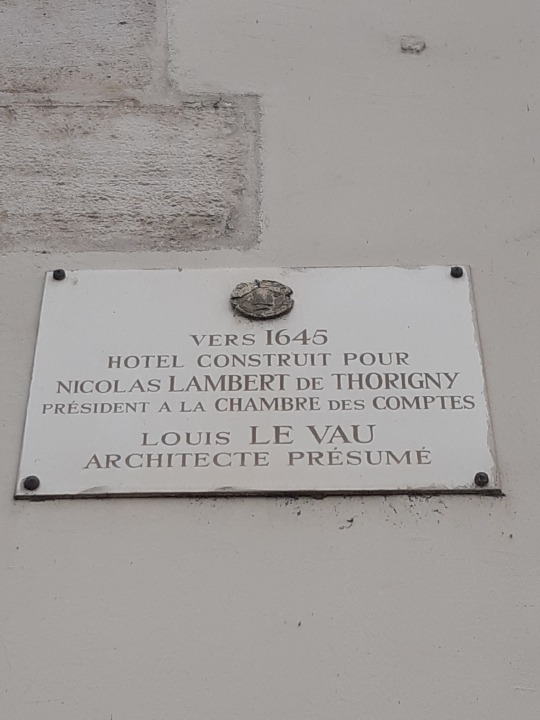

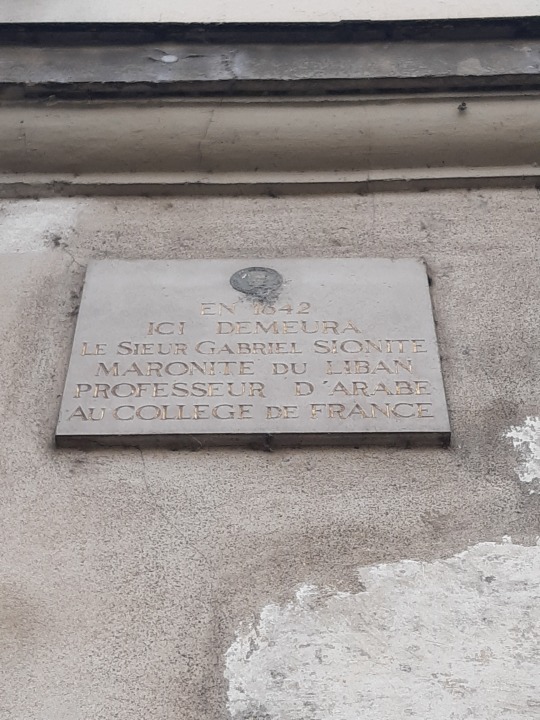

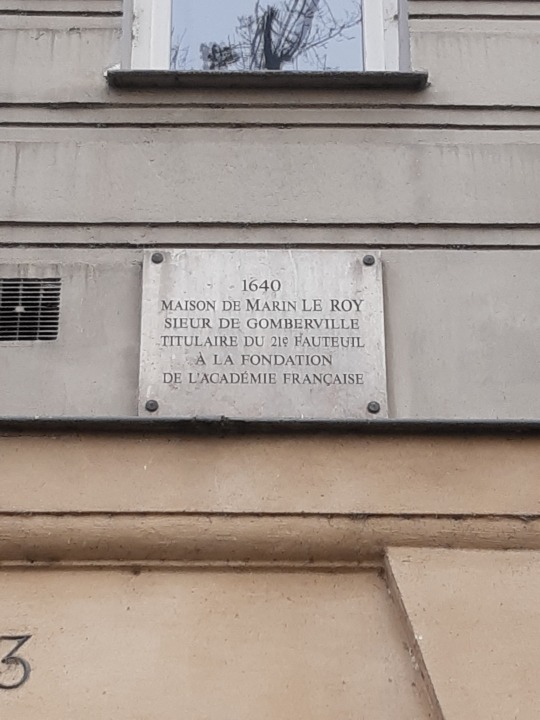
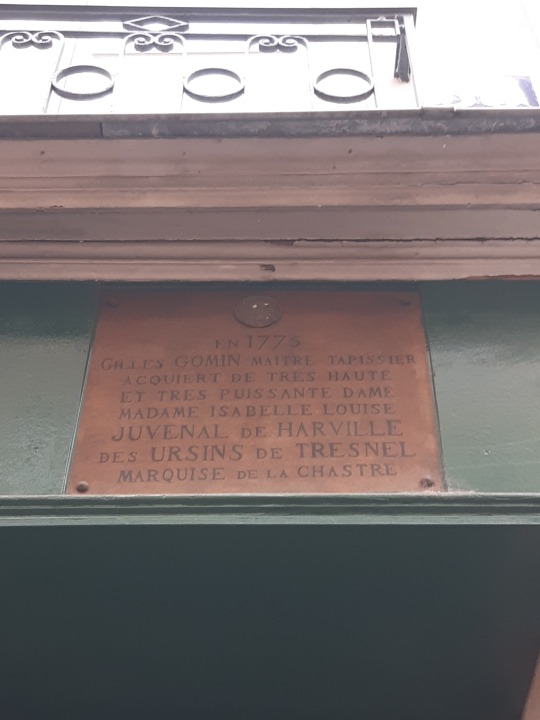



Pour célébrer la rédaction du 200ème billet du blog "Plaque Mémoire", j'ai souhaité présenter un format un peu plus libre que les autres publications, en particulier eu égard au fait que les plaques commémoratives présentées ici sont différentes de celles habituellement traitées, en ce qu'elles se rapportent davantage à la propriété de bâtiments.
L'île Saint-Louis (anciennement île Notre-Dame) est une île située sur la Seine, dans le quatrième arrondissement de Paris. Structurée autour de la rue Saint-Louis en l'île qui la traverse de part en part, elle a fait l'objet d'une vaste opération d'urbanisme au XVIIème siècle, et rassemble alors un très grand nombre d'hôtels particuliers qui lui valent le surnom d'"île des palais". Ces bâtiments, riches résidences passant aux mains de différentes familles aisées, connaîtront au fil des années des habitants prestigieux.
Les photos montrées ici ne constituent pas une liste exhaustive des hôtels particuliers de l'île Saint-Louis, dont beaucoup ont été préservés et sont de remarquables monuments historiques cachés en plein cœur, comme l'hôtel de Lauzun (situé au 17 quai d'Anjou)
11 quai de Bourbon. Texte de la plaque : 1643. Demeure de Philippe de Champaigne, peintre et valet de chambre de la Reine mère.
13 quai de Bourbon. En 1695, propriété de Louis Joseph de Playbault, seigneur de Villars, capitaine au régiment de la reine.
15 quai de Bourbon : Hôtel Le Charron (ou hôtel de Vitry). Texte de la plaque : Hôtel Le Charron. Contrôleur de l'extraordinaire des guerres en Picardie. Son petit neveu J.J. Charron, marquis de Menars, est beau frère de Colbert. Le peintre Émile Bernard y a résidé.
31 quai de Bourbon. Texte de la plaque : Emplacement de la propriété du fils de Théophraste Renaudot, médecin de Louis XIII, commissaire général des pauvres, fondateur du journalisme. L'écrivain Charles-Louis Philippe y a résidé.
18-20 quai d'Orléans : Hôtel Rolland. Texte de la plaque : Hôtel Rolland. En 1775 propriété de Étienne Françis Turgot, marquis de Soumont, gouverneur de Cayenne et de la Guyanne.
16 quai de Béthune. Texte de la plaque : Construit en 1647. En 1728 très haute et très puissante dame Marguerite Thérèse Rouillé, princesse de Poix, veuve de très haut et de très puissant seigneur monseigneur Armand Jean Duplessis, duc de Richelieu et de Fronsac, pair de France, chevalier des ordres du Roy, lègue cet hôtel à son beau-fils LF Armand de Vignerod, futur maréchal de Richelieu
22 quai de Béthune : Hôtel Lefebure de la Malmaison. Texte de la plaque : Hôtel Lefebure de la Malmaison, Conseiller au Parlement, 1645. Baudelaire y vécut en 1842 et 1843. Le poète Charles Baudelaire y a résidé.
28 quai de Béthune : Hôtel Aubert-Perrot. Texte de la plaque : 1640. Maison de M. Aubert, contrôleur des rentes de l'Hôtel de ville. Façade du XVIIIème siècle
5 quai d'Anjou. Texte de la plaque : Petit hôtel de Marigny, élevé en 1640. Habité par Rennequin, créateur de la Machine de Marly
7 quai d'Anjou. Texte de la plaque : 1642 Hôtel construit pour Jacques Brebart Marchand de Fer. Siège de la Corporation des Maîtres Boulangers depuis 1843
11 quai d'Anjou. Texte de la plaque : Construit vers 1645 pour Nicolas Lambert de Thorigny. Louis Le Vau architecte. Acquis en 1945 par Henri Digard.
15 quai d'Anjou. Texte de la plaque : Vers 1645 hôtel construit pour Nicolas Lambert de Thorigny, président a la Chambre des Comptes. Louis Le Vau, architecte présumé.
23 quai d'Anjou. Texte de la plaque : Hôtel ci-devant du Président Perrot
23 quai d'Anjou. Texte de la plaque : En 1642 ici demeura le Sieur Gabriel Sionite, Maronite du Liban, professeur d'arabe au Collège de France
27 quai d'Anjou. Texte de la plaque : 1644. Sur l'emplacement acheté en 1621 par Salomon de Caux, architecte du roi Louis XIII, Simon le Bossu, Maitre des Comptes, construit cet Hôtel où vécut en 1691 Nicolas II Sainctôt, Introducteur des Ambassadeurs
33 quai d'Anjou. Texte de la plaque : 1640. Maison de Marin Le Roy, Sieur de Gomberville, titulaire du 21e fauteuil à la Fondation de l'Académie française
38 rue Saint-Louis en l'Île. Texte de la plaque : En 1775, Gilles Gomin maître tapissier acquiert de très haute et très puissante dame Madame Isabelle Louise Juvénal de Harville des Ursins de Tresnel, marquise de la Chastre
rue Saint-Louis en l'Île. Texte de la plaque : 1640. Maison à l'enseigne de la Bastille, louée à François Goube, marchand de vins
19 rue des Deux Ponts : Maison de l'Image Saint-Louis. Texte de la plaque : Maison de l'Image Saint-Louis. Abrite en 1642 le tavernier Framery, en 1742 le notaire Deshayes
9 rue Poulletier : Hôtel de Gillier. Texte de la plaque : Hôtel de Gillier. Construit de 1637 à 1640, par Louis Le Vau, père et fils, pour Melchio de Gillier, Seigneur de Lagny, conseiller du roy Louis XIII
0 notes
Text
Knights of the Order of the Crescent
Knights of the Order of the Crescent is a worthy discussion since we know that the crescent moon is an indigenous symbol from Southern Arabia, aka, Mexico, since Mexico was Southern Arabia and Mexico means, “In the center of the Moon”: https://rb.gy/himgj1.
#foogallery-gallery-3261 .fg-image { width: 150px; } #foogallery-gallery-3261 .fg-image { width: 150px; }
Map of Mayaca, Florida (Ethiopia)
There is a town in Ethiopia called Mayo, Ethiopia. The name Mayo is the same as Maya (Mayans), so we are dealing with the Mayans. There was once a Mayan city in Florida called Mayaca (see post image of map), which is further proof that the Mayans established La floridas (Ethiopia Superior/ Tameri). This city was obviously named after the Mayas/ Mayans since we can see their tribal name of Maya in Mayaca (Maya-ca). Mayaca is now extinct and so is the Mayaca Tribe (Mayaca people), and we can blame the Spanish invasion (the Holy Wars) of the 1500's for their extinction; however, Florida still has Port Mayaca as evidence of a city now gone.
Duke of Milan (1454);
SFORZA (François-Alexandre) Quarterly: 1st and 4th Or, to the eagle Sable crowned of the first (LOMBARDY); 2nd and 3rd, Argent, to the bisse Azure in pale, crowned Or, giving birth to a child Gules (VISCONTI-MILAN). Duke of Milan (1454); natural son of Muzio Attendolo dit Sforza, lord of Cotignola, and Lucrezia Trezana or Tresciano; husband: 1° of Polyxène Ruffo, widow of Jacques Marilli (?) Grand Seneschal of the Kingdom of Naples, daughter of Charles Ruffo, Count of Montalto and Corigliano, and of Cevarella de Saint-Séverin; 2° (August 1, 1441) of Blanche-Marie Visconti, natural daughter of Philippe-Marie Visconti, Duke of Milan; born at San-Miniato (Tuscany), July 25, 1401, died at Milan, March 8, 1466.
First Baron of Maine, Viceroy of Sicily and Anjou
CHAMPAGNE (Peter I of) Sable, fretty Argent; a chief or charged with a lion issanl gules (1). Currency (2): Sta closes. Lord of Champagne, Pescheseul, Lonvoisin, Bailleul and Parcé, Prince of Montorio and Aquila, First Baron of Maine, Viceroy of Sicily and Anjou; third son of Jean III of Champagne and Ambroise de Crénon; married, according to contract of April 22, 1441, with Marie de Laval, sister of Guy de Laval (see this name), and daughter of Thibaut and Jeanne de Maillé-Brézé; died in Angers, almost a hundred years old, on October 15, 1486, and buried on the 22nd of the same month, in the church of Saint-Martin de Parce (3). This valiant knight, who had distinguished himself in many battles, won two great victories against the English: the first in 1442, in the plain of Saint-Denis d'Anjou, and the second in 1448, before Beaumont-le-Vicomte. The following year, Jean d'Anjou gave him the order to help Charles VII against the English, and he covered himself with glory at the Battle of Formigny (1450).
ANJOU (Charles I of) Count of Maine
ANJOU (Charles I of) Azure, semé of fleurs-de-lis Or, to the lion Argent set in quarter; bordered gules. Count of Maine, Guise, Mortain, viscount of Châtellerault, lieutenant general for the king in Languedoc and Guyenne; third son of Louis II of Sicily and Yolande of Aragon; married: 1°, before 1434, with Cobelle Ruffo (2), widow of Jean-Antoine Marzano, Duke of Sessa, Prince of Rossano, daughter of Charles Ruffo, Count of Montalto and Corigliano, Grand Justice of the Kingdom of Naples, and of Cevareila de Saint-Séverin (see this name); 2°, by contract of January 9, 1443, with Isabelle de Luxembourg, daughter of Pierre de Luxembourg, count of Saint-Pol, and of Marguerite des Baux; born in the castle of Montils-les-Tours, October 14, 1414; died at Neuvy, in Touraine, on April 10, 1472, and buried in the church of Saint-Julien in Le Mans. (2) Through this alliance, Cobelle Ruffo had become the sister-in-law of three kings, Louis III of Sicily, René of Anjou and Charles VII. Polyxène Ruffo, his sister, first married François-Alexandre Sforza (see this name).
Baron of Mison
AGOULT (Fouquet or Foulques d') Or, to the ravishing wolf Azure, armed, langued and vilené Gules (1). Baron of Mison, of La Tour-d'Aigues, of Sault and of Forcalquier, lord of Thèze, Barret, Volone, La Bastide, Peypin, Niozelles, etc., chamberlain of René d'Anjou, viguier of Marseilles (1443, 1445 and 1472); son of Raymond and Louise de Glandevès-Faucon, his second wife; married: 1° with Jeanne de Beaurain; 2° with Jeanne de Bouliers; died without posterity at La Tour-d'Aiguës in 1492, nearly 100 years old. Fouquet d'Agoult had been nicknamed by his contemporaries the Great and the Illustrious, in view of his love of justice, his magnificence and his liberality. Nostradamus (2) reports that "after the death of this so good and so excellent Roy (René d'Anjou) several and various eulogies, epitaphs and learned compositions were placed on his tomb, in the church of the Convent of the Carmelites of the City of Aix...The eulogies were in various languages, Hebrews, Greeks, Latins, French, Italians, Cathalans and Provencals, which the magnificent Fouquet d'Agoult, lord of Sault, had collected and transcribed exactly by the express command de la Reyne his second wife.
Moslem-Jerusalem under the Order of the Cresent, 1070
Muslem-Jerusalem from 1070 under the order of the Cresent. Moslem-Jerusalem, which looks very Moorish with the Crescent moons at the top of those Maurice domes. I love the Phoenician purple trim too at the top. This image is a full-page miniature of Jerusalem and the Dome of the Rock Image taken from feature 5 of Book of Hours, Use of Paris ('The Hours of René d'Anjou'). Written in Latin, calendar, and rubrics in French.
King René of Anjou
The Ordre du Croissant (Order of the Crescent; Italian: Ordine della Luna Crescente) was a chivalric order founded by Charles I of Naples and Sicily in 1268. It was revived in 1448 or 1464 by René I of Naples, the king of Jerusalem, Sicily, and Aragon (including parts of Provence), to provide him with a rival to the English Order of the Garter. René was one of the champions of the medieval system of chivalry and knighthood, and this new order was (like its English rival) neo-Arthurian in character. Its insignia consisted of a golden crescent moon engraved in grey with the word LOZ, with a chain of 3 gold loops above the crescent. On René's death, the Order lapsed. The Order of the Crescent, also known as "Order of the Crescent in the Provence,” a French chivalric order was founded on 11 August 1448 in Angers by King Rene of Provence as a court order. The order, which united itself, features from knighthood and spiritual orders, and counted up to 50 knights, of which can be dukes, princes, marquises, viscounts and knights with four quarters of nobility.
A French Canadian Maur by the name of Ann Marie Bourassa sent me a link to the Armorial Chevaliers (Knights) of the Order of the Crescent and the images in this post spoke to my DNA, since my maternal surname, “Chavis” means the Goat and Brave boy: https://rb.gy/qk2k10.
Chavis/ Chavers is also short for Chevaliers, since the Chavis are a Royal family of knights that is associated with bravery and passing the BAR. Chevaliers is French for Knights since the number one code of the knights is chivalry, which means bravery. During the old-world chivalry (honor) was established from being brave in battle, and cavalry is another word that is derived from chevaliers since cavalry means an army of mounted braves (Knights) on horses.
In 1066 during the Battle of Hastings, my French royal family of Shivers, which is French for Chavis, as knights, helped the French Viking King, “William the Conqueror,” a Danite, conquer England with the aid of two dragons and were given the Shivers Mountains in England by William the Conqueror due to the acts of Chivalry (bravery=Knighthood) on the battlefield: https://rb.gy/n9vlao.
Here is the link to the Armorial Knights of the order of the Crescent: https://rb.gy/y2hpa4. This link is in French, but you can use Goggle Translate to translate the French into English.
Please, avoid the hijack with the whitewash when reading the Armorial Knights link, because the original French were the Franks or Gauls (Gullah Geechee/ Galilee), and they were French Maurs (Merovingians): https://rb.gy/posjrm.
“Franks (Franci), a Germanic people who conquered Gallia (Gaul), and made it Francia (France).” [End quote from Oxford Classical Dictionary]. “Gaul, French Gaule, Latin Gallia, the region inhabited by the ancient Gauls, comprising modern-day France and parts of Belgium, western Germany, and northern Italy”: https://www.britannica.com/place/Gaul-ancient-region-Europe.
The Americas has the most place names associated with Gaul/ Gales/ Gules/ Gola/ Galley/ Gullah/ Galilee/ Gaelic (France). For example, Galesburg, Illinois; Galilee, Pennsylvania; Angola, Louisiana; Angola, Indiana, etc. Some of the African slaves allegedly came from Angola, aka, the Congo (Congo, Alabama*), which is a country allegedly in Africa on the Slave Coast. Gola, which is short for Angola (An-Gola), is also Gula as in Gullah Geechee – Seminole and Creek (Greek) Indians: https://msuweb.montclair.edu/~sotillos/moore.htm.
Guale was a historic Native American chiefdom (Tribe) of Mississippian culture peoples located along the coast of present-day Georgia and the Sea Islands. This tribe of Guale Indians were Maurs (Maur-iners as in Marine and Mar/ Mer as in sea), aka, Sea people. Guale was once a city on the Sea Coast of Georgia that is now extinct and so is this tribe of Indians (Washitaw Muurs = Yamasees and the five civilized tribes), due to Spanish conquest: https://www.americaistheoldworld.com/gibraltar-of-the-west/.
In South America we have the Spanish equivalent to the Gullah Geechee, the “Gualeguaychú.” Gualeguaychú is a city in the province of Entre Ríos, Argentina, on the left bank of the Gualeguaychú River (a tributary of the Uruguay River). In Mexico, we have Guatemala, which is a derivative of Gaul since the prefix Guate in Gutemala is Gaul.
This book, “Africa vs. America,” demonstrates that Europeans copied ancient Ghana that was in South America (Guyana) and built a second Ghana on the other coast [Africa], which is known as Congo or Angola. Africa vs. America,” by Isabel Alvarez: https://www.americaistheoldworld.com/ancient-ghana-is-guyana/.
This FB post deals with a French Merovingian Queen, nicknamed “The She Wolf,” since she convinced a Baron (wizard), Lord Roger Mortimer, to help her to overthrow her gay husband, King Edward II of England to take the crown: https://rb.gy/7g9b4s.
Speaking of the She Wolf, the Capitoline Wolf is the She Wolf and is a symbol of the founding of Rome. The wolf is a sacred symbol of the Turks and the Danites. The Americas has 13 Capitoline Wolf Statues, which suggests that the greater Rome or Imperial Rome was in the Americas. Rome is derived from the Egyptian word Ramen and the Hebrew word Rimon, which means pomegranate. The pomegranate is a symbol of Granada Land (the promised land), which was in the Americas: https://www.americaistheoldworld.com/imperial-rome-and-italy-superior/.
The Armorial Knights of the order of the Crescent has a few coats of arms with the She Wolf in the center of the moon. Mother Mary/ Maya/ Meru, aka, the Queen of Heaven, is shown in many images as the Venus Star Transit, which is the Mayan 5-pointed Star, standing in the center of the crescent moon. The wolf is code for the Dragon, aka, the constellation Draco when its Star Theban was the Pole Star or the North Star.
Who was Rene d’Anjou?
In this post are some images of the Royal Knights’ coat of arms of the Order of the Crescent, instituted by King René d’Anjou, ms. Fr. 5225. Statues of the Order of the Crescent, founded by René d’Anjou (1448), ms. Fr. 25204. (Source: gallica.bnf.fr, National Library of France).
The Ordre du Croissant (Order of the Crescent; Italian: Ordine della Luna Crescente) was a chivalric order [knights’ order] founded by Charles I of Naples and Sicily in 1268. It was revived in 1448 or 1464 by René I of Naples, the king of Jerusalem, Sicily and Aragon (including parts of Provence), to provide him with a rival to the English Order of the Garter. René was one of the champions of the medieval system of chivalry and knighthood, and this new order was (like its English rival) neo-Arthurian in character. Its insignia consisted of a golden crescent moon engraved in grey with the word LOZ, with a chain of three gold loops above the crescent. On René’s death, the Order lapsed.
The Armorial Knights of the Order of the Crescent, also known as “Order of the Crescent in the Provence,” a French chivalric order was founded on 11 August 1448 in Angers by King Rene of Provence as a court order. The order, which united itself, features from knighthood and spiritual orders, and counted up to fifty knights, of which can be dukes, princes, marquises, viscounts, and knights with four quarters of nobility.
The Knights committed themselves to mutual assistance and loyalty to the order which, after the Provence became part of France in 1486, was soon forgotten. Ackermann mentions this knighthood as a historical order of France.
In this post is a poorly whitewashed image of King Rene of Anjou since he is still swarthy (dark/ Black) in his image. King Rene was the grandson of King John II of France, aka, John the Good, who was undoubtedly a Naga/ Negro: https://rb.gy/onckrm.
René of Anjou (Italian: Renato; Occitan: Rainièr; Catalan: Renat; 1409–1480) was Duke of Anjou, King of Jerusalem, King of Sicily, King of Aragon (Gules), and Count of Provence [Province, Maine*] from 1434 to 1480, who also reigned as King of Naples as René I from 1435 to 1442 (then deposed as the preceding dynasty was restored to power). Having spent his last years in Aix-en-Provence, he is known in France as the Good King René (Occitan: Rei Rainièr lo Bòn; French: Le bon roi René).
René was a member of the House of Valois-Anjou, a cadet branch of the French royal house, and the great-grandson of John II of France. He was a prince of the blood, and for most of his adult life also the brother-in-law of the reigning king Charles VII of France. Other than the aforementioned titles, he was for several years also Duke of Bar and Duke of Lorraine.
René was born on 16 January 1409 in the castle of Angers.[2] He was the second son of Duke Louis II of Anjou, King of Naples, by Yolanda of Aragon.[2] René was the brother of Marie of Anjou, who married the future Charles VII and became Queen of France.[3]
Anjou is just a Latinized way of saying Andros/ Andrews, so we are dealing with Saracens (old Arabs) of the lost 10 lost tribes of Israel that were descendants of the first Apostle Saint Andrew: https://the-red-thread.net/genealogy/andrews.html.
Greater France or France Superior in the Americas:
If you have read my post about Imperial Rome and Italy Superior you already know that Italy Superior was La Floridas and there is also a Naples, Florida, which suggests that Rene Anjou was once the king of Naples, Florida since La Floridas was the original Italy. Remember that France borders Italy, which means that since Italy Superior was in the Americas Greater France or France Superior was also in the Americas.
Now, if we include Gules/ Gual (Aragon) and Maine, it leaves no doubt that this history is referring to Greater France in the Americas since the Imperial Rome and Italy Superior post proves that Africa, Europe, and the Middle East was originally in the Americas.
Maine and the New England states were once part of the Nova France and this territory was once known as Nova France (New France), according to old maps from the 1500’s – 1700’s, however, we know that it is nothing new about Nova France since the Americas is the East (the Orient) and the old world. Maine also has a Bar Harbor, now a resort for the wealthy. Notice that when you read the description of the coat of arms in the Armorial Knights link you will see a few references to Bar and Maine, which suggests that ancient Frankish (French) history is referring mostly to the Americas.
France borders Italy, according to modern-day maps, therefore, this post is more evidence confirming that the original France was in the Americas since Florida was Italy Superior.
King Anjou was born and buried in Angers, France. Angers sounds a lot like Algiers, Louisiana. Algiers was part of the Ottoman Empire that was originally in the Americas: https://www.americaistheoldworld.com/the-ottoman-empire-in-the-americas/.
The French and the Ottoman Turks as Moormans (Danites=Vikings=Sea people) were blood allies against Spain (Rome) during the Crusades or Holy Wars. Louisiana has France written all over it since Louisiana is called Cajun Country. Plus, the prefix of Louis in Louis-iana is a French name that is associated with a long list of French Kings. Cajun and Acadian (Akkadian) are the same word. In fact, Louisiana used to be a part of the Acadian Republic. Louisiana is called the boot kicking state since Louisiana is shaped like a boot, and so is Italy and Florida. Louisiana has a French Quarters and the people called themselves Cajuns (Acadians).
Additionally, the city of New Orleans, Louisiana, is called the Crescent City and it shares the same place names as Orleans, France. Louisiana also has Parishes (Parish=Paris), which is derived from Paris, as in Paris, France. Paris means “For Isis” or “City of Isis,” and Paris is short for Paradise. Baton Rouge (Louisiana) is a French word that means Red Stick.
The New Orleans Saints logo is the fleur-de-lis (Florida*). It’s a French word that means lily flower in English. French Maurs (High Priest of Anu) known as the Merovingians introduced the fleur-de-lis as a symbol of France, which is sometimes spelled fleur-de-lys; and it is a stylized lily or iris commonly used for decoration. In fact, translated from French, fleur-de-lis means “lily flower.” Fleur means “flower,” while lis means “lily.” The interesting thing about the fleur-de-lis or Lily Flower is that it is derived from the Bee, and it is just an upside-down Bee: https://rb.gy/jpasca.
AGOULT (Fouquet or Foulques d’)
Or, to the ravishing wolf Azure, armed, langued and vilené Gules (1).
Baron of Mison, of La Tour-d’Aigues, of Sault and of Forcalquier, lord of Thèze, Barret, Volone, La Bastide, Peypin, Niozelles, etc., chamberlain of René d’Anjou, viguier of Marseilles (1443, 1445 and 1472); son of Raymond and Louise de Glandevès-Faucon, his second wife; married: 1° with Jeanne de Beaurain; 2° with Jeanne de Bouliers; died without posterity at La Tour-d’Aiguës in 1492, nearly 100 years old.
Fouquet d’Agoult had been nicknamed by his contemporaries the Great and the Illustrious, in view of his love of justice, his magnificence and his liberality. Nostradamus (2) reports that “after the death of this so good and so excellent Roy (René d’Anjou) several and various eulogies, epitaphs and learned compositions were placed on his tomb, in the church of the Convent of the Carmelites of the City of Aix…The eulogies were in various languages, Hebrews, Greeks, Latins, French, Italians, Cathalans and Provencals, which the magnificent Fouquet d’Agoult, lord of Sault, had collected and transcribed exactly by the express command de la Reyne his second wife.
(1) All the genealogists and heraldists describe the d’Agoult coat of arms in the terms we have just used; however, the wolf is always represented crawling and not ravishing, that is to say holding its prey in the mouth. We didn’t want to change anything in the accepted description; but it was necessary to point out that it does not agree with the representation of the coat of arms. In 1220, the seal of Raymond II d’Agoult bore a passing wolf.
(2) History and Chronicle of Provence, p. 646.
ANJOU (Charles I of)
Azure, semé of fleurs-de-lis Or, to the lion Argent set in quarter; bordered gules.
Count of Maine, Guise, Mortain, viscount of Châtellerault, lieutenant general for the king in Languedoc and Guyenne; third son of Louis II of Sicily and Yolande of Aragon; married: 1°, before 1434, with Cobelle Ruffo (2), widow of Jean-Antoine Marzano, Duke of Sessa, Prince of Rossano, daughter of Charles Ruffo, Count of Montalto and Corigliano, Grand Justice of the Kingdom of Naples, and of Cevareila de Saint-Séverin (see this name); 2°, by contract of January 9, 1443, with Isabelle de Luxembourg, daughter of Pierre de Luxembourg, count of Saint-Pol, and of Marguerite des Baux; born in the castle of Montils-les-Tours, October 14, 1414; died at Neuvy, in Touraine, on April 10, 1472, and buried in the church of Saint-Julien in Le Mans.
(2) Through this alliance, Cobelle Ruffo had become the sister-in-law of three kings, Louis III of Sicily, René of Anjou and Charles VII. Polyxène Ruffo, his sister, first married François-Alexandre Sforza (see this name).
ANJOU (Jean d’)
Per fess of one party, of two, which makes six quarters: 1 barage Argent and Gules, of eight pieces (HUNGARY); 2nd, Azure, strewn with fleurs-de-lis Or, a label Gules, five pendants in chief (ANJOU-SICILY); 3 Argent, to the cross of Jerusalem Or, at angle (JERUSALEM); 4th, azure, strewn with fleurs-de-lis or, a border gules (ancient ANJOU); 5th Azure, strewn with recrossed crosses set foot Or, two bars backed by the same debruising over all (BAR): 6th Or, a bend Gules charged with three alerions Argent ( LORRAINE); a label Gules three pendants in chief, debruising on the large quarters.
Duke of Calabria and Lorraine, senator of the Crescent (1470); eldest son of René d’Anjou and Isabelle de Lorraine; married, by treaty of April 2, 1437, with Marie de Bourbon, daughter of Charles I, Duke of Bourbon, and Agnès de Bourgogne; born in Toul on August 2, 1426, died in Barcelona on December 16, 1470, and buried in Angers, in the church of the Cordeliers (1).
(1) On a glass roof of this church, this prince was represented on his knees, his hands joined, a floral crown on his head, and wearing a loose coat with a turned down collar. In front of him was the coat of arms described above, supported by the emblem of the order of the Crescent with its motto. (MONTFAUCON, op. cit., t. II, pl. LXI11). These arms are absolutely identical to those which appear on a counter-seal of Jean d’Anjou, affixed to a document of 1465 (DOUET D’ARCQ, Collection de sceaux, t. I, n°789).
ANJOU (René d’)
Cut from one, from two, which makes six quarters; to 1 of HUNGARY; at 2 d’ANJOU-SICILY; at 3 of JERUSALEM; at 4 d’ANJOU old; at 5 of BAR; at 6 LORRAINE; over all Or, four pales Gules (ARAGON).
King of Naples, Sicily, Jerusalem and Aragon, Duke of Anjou, Lorraine and Bar, Count of Provence, Senator of the Crescent (1449); son of Louis II, Duke of Anjou, King of Naples, and Yolande of Aragon; married, in first marriage, by treaty of March 20, 1419, with Isabelle de Lorraine, eldest daughter and heiress of Charles II, Duke of Lorraine, and of Marguerite de Lorraine; in second marriage, September 10, 1454, with Jeanne de Laval, daughter of Guy XIV, Count of Laval, and Isabelle de Bretagne; born in Angers on January 16, 1409, died in Aix on July 10, 1480, and buried in the church of Saint-Maurice in Angers on October 26, 1481.
From the institution of the Armorial Knights of the Order of the Crescent, King René accompanied these coats of arms (1) (still existing in 1620, at Saint-Maurice d’Angers) with the insignia of the order (2), which he had painted and sculpted on a large number of monuments and works of art, to engrave on its seals (3) and to embroider (4) on its tapestries and ceremonial costumes.
(1) On the subject of the various coats of arms carried successively by René, see our work: La Croix de Jerusalem dans le Blason, p. 14.
(2) Ung radiant and marvelous crescent,
Garny of fine gold and white enamel, Of which
there was in frank writing,
Loz in crescent in engraved and understood,
Such motto had this lord taken.
Not without reason, for his loz would grow
On all living beings who had loz and be.
(OCTAVIE DE SAINT-GELAIS, Le Séjour de l’Honneur.)
(3) Some of these seals have a double crescent on the reverse that Mr Douet d’Arcq (collection of seals, n°11783) took for two bags or stacked purses.
(4) In 1448, Pierre du Villant, painter and embroiderer to the King of Sicily, two professions closely united in the Middle Ages, executed four embroidered crescents for his new order of chivalry (LECOY DE LA MARCHE, Extracts from accounts and memorials, n ° 632).
CHAMPAGNE (Peter I of)
Sable, fretty Argent; a chief or charged with a lion issanl gules (1). Currency (2): Sta closes.
Lord of Champagne, Pescheseul, Lonvoisin, Bailleul and Parcé, Prince of Montorio and Aquila, First Baron of Maine, Viceroy of Sicily and Anjou; third son of Jean III of Champagne and Ambroise de Crénon; married, according to contract of April 22, 1441, with Marie de Laval, sister of Guy de Laval (see this name), and daughter of Thibaut and Jeanne de Maillé-Brézé; died in Angers, almost a hundred years old, on October 15, 1486, and buried on the 22nd of the same month, in the church of Saint-Martin de Parce (3).
This valiant knight, who had distinguished himself in many battles, won two great victories against the English: the first in 1442, in the plain of Saint-Denis d’Anjou, and the second in 1448, before Beaumont-le-Vicomte. The following year, Jean d’Anjou gave him the order to help Charles VII against the English, and he covered himself with glory at the Battle of Formigny (1450).
(1) In the 17th century, this family sought to attach itself to the illustrious house of the Counts of Champagne and took its arms, which are: Azure with a silver band, bordered by two
cotices potent and counter-potentiated Golden.
(2) Motto and coat of arms still visible in 1620, in the chapel of the Knights of the Crescent in Saint-Maurice d’Angers.
(3) The epitaph engraved on his tomb had been composed, it seems, by the king.
SFORZA (François-Alexandre)
Quarterly: 1st and 4th Or, to the eagle Sable crowned of the first (LOMBARDY); 2nd and 3rd, Argent, to the bisse Azure in pale, crowned Or, giving birth to a child Gules (VISCONTI-MILAN).
Duke of Milan (1454); natural son of Muzio Attendolo dit Sforza, lord of Cotignola, and Lucrezia Trezana or Tresciano; husband: 1° of Polyxène Ruffo, widow of Jacques Marilli (?) Grand Seneschal of the Kingdom of Naples, daughter of Charles Ruffo, Count of Montalto and Corigliano, and of Cevarella de Saint-Séverin; 2° (August 1, 1441) of Blanche-Marie Visconti, natural daughter of Philippe-Marie Visconti, Duke of Milan; born at San-Miniato (Tuscany), July 25, 1401, died at Milan, March 8, 1466.
As you can see, the Armorial Knights of the Order of the Crescent were very distinguished and extraordinary gentlemen and so was their King, Rene of Anjou since King Rene was a Saracen (Moslem) that was the King of Jerusalem, Sicily, Naples, and Aragon. In this post is an image of Moslem-Jerusalem, which looks very Moorish with the Crescent moons at the top of those Maurice domes. I love the Phoenician purple trim too at the top. This image is a full-page miniature of Jerusalem and the Dome of the Rock Image taken from feature 5 of Book of Hours, Use of Paris (‘The Hours of René d’Anjou’). Written in Latin, calendar, and rubrics in French: https://picryl.com/media/jerusalem-from-bl-eg-1070-f-5-4d2417.
The royal coats of arms of the Knights of the Order of the Crescent display powerful images of occult symbols like the kingfish (fisher king), the Falcon (Horus), and the Bee/ Beetle. The Fleur-de-lis symbol is an upside-down bee. We know that the study of the birds (falcons) and the bees/ beetles is real sex (love) through alchemy, and this advanced knowledge (magic) that was acquired from Thoth/ Thought was used to create an Eden style of government or Ethiopia = Utopia that was based on free energy and a resource-based economy: https://www.americaistheoldworld.com/teotihuacan-is-the-home-of-thoth/.
The fisher kings who were Fishers of men, aka, Magi’s, were the High Priest of Anu (Maurs) from Nineveh, which was Jacksonville, Florida, and surrounding areas. Nineveh means place of fish or House of fish and is the home of Prophet Jonah of the Bible: https://www.americaistheoldworld.com/nineveh-was-jacksonville-florida/.
Speaking of Jonah, a fish/ whale swallowed him for 3 days and then spit him out, which is code for him being born from a dragon, making Jonah a messiah, a Christ-king, and/or a Dragon-king: https://rb.gy/dsgf9g.
In this post is the coat of arms of royal knight, SFORZA (François-Alexandre), that depicts a Maur (High priest of Anu) being born from a blue dragon since serpents/ dragons don’t eat their prey feet-first. Also, notice the double headed Turkey of the Holy Roman Empire on the coat of arms. People think that this bird is an Eagle when it really is a Turkey, since Turkeys have beards and Eagles don’t. If you view different images of Hapsburg (Holy Roman empire) coat of arms you see that the bird on this coat of arms is clearly a double headed Turkey with a red beard. The Turkey is indigenous to the Americas and so is the Roman Empire. The Turkey is a hybrid bird that was spliced together with light codes (sound frequencies), aka, light alchemy, by Turkmen/ Moorman long ago using a combination of the Tukey Buzzard and the Chicken (the base metals) to create another meat source known as Turkey (the gold or good product).
I know this Roman History is confusing because Rome was a global empire that was on both sides of the world, however, the legit honorable Roman Empire that was in the Americas and under French Washitaw rule was overthrown by the duplicate Christian and Catholic Rome in Europe since the American version of the Romans were Saracens (Moslems) and pagans (Hebrews) that were labeled as infidels, in the eyes of the duplicate Roman hijack.
The post Knights of the Order of the Crescent appeared first on America is the Old World.
source https://www.americaistheoldworld.com/knights-of-the-order-of-the-crescent/?utm_source=rss&utm_medium=rss&utm_campaign=knights-of-the-order-of-the-crescent
1 note
·
View note
Note
Have you read Catherine Hermary-Vieille's Tudor trilogy "Crepuscule des Rois"? Is It good? I have many doubts bc a 3 book saga covering from Marguerite d'Anjou to Katherine Parr might be not enough in getting these women's personalities right (especially the most complex ones, like Anne Boleyn, often reduced to a scheming harpy, is this the case?). On the other hand, i think a French writer's POV on the most famous English family might be interesting. What are your thoughts on this saga?
sorry anon but i've neither read it nor heard of it. I'm not sure what to say because usually i'm steering clear of that kind of stuff because in my opinion it's never really good nor does it bring anything to the table
1 note
·
View note
Photo





· HISTORICAL WOMEN IN ARMOUR ·
Alicia Borrachero as ISABEL I DE CASTILLA
The Spanish Princess (2019-2020) · By Phoebe De Gaye
Sophie Okonedo as MARGUERITE D'ANJOU
The Hollow Crown (2016) · By Nigel Egerton
Gina Mckee as CATERINA SFORZA
The Borgias (2011-2013) · By Gabriella Pescucci
Laura Morgan as JEANNE D'ARC
The Hollow Crown (2016) · By Nigel Egerton
Cate Blanchett as ELIZABETH I
Elizabeth: The Golden Age (2007) · By Alexandra Byrne
#the spanish princess#thespanishprincessedit#tspedit#the hollow crown#thehollowcrownedit#thcedit#the borgias#theborgiasedit#elizabeth the golden age#elizabethedit#isabel i de castilla#isabella i of castille#marguerite d'anjou#margaret of anjou#caterina sforza#jeanne d'arc#joan of arc#elizabeth i#elizabeth i of england#alicia borrachero#sophie okonedo#gina mckee#laura morgan#cate blanchett#mine#costume#costumes#whew a lot to tag#women tag
3K notes
·
View notes
Text
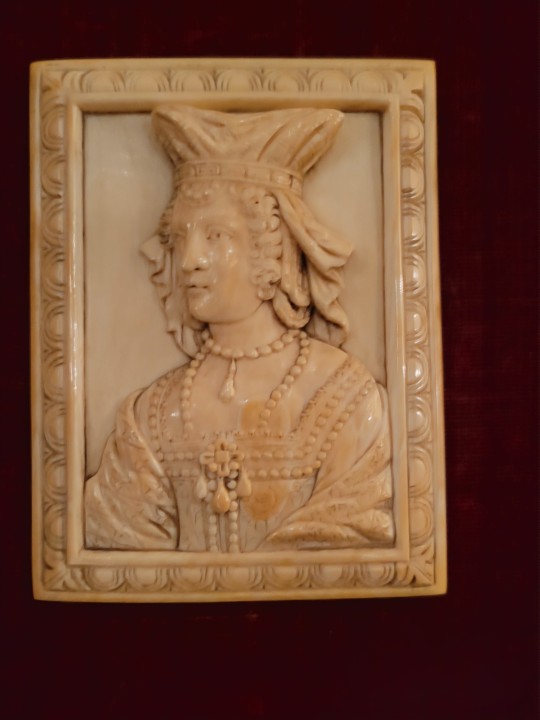

This museum identified this ivory plaque as Margaret of Anjou.
#margaret of anjou#marguerite d'anjou#middle ages#medieval#fifteenth century#i don't know of this is accurate#shredsandpatches#henry vi
56 notes
·
View notes
Text
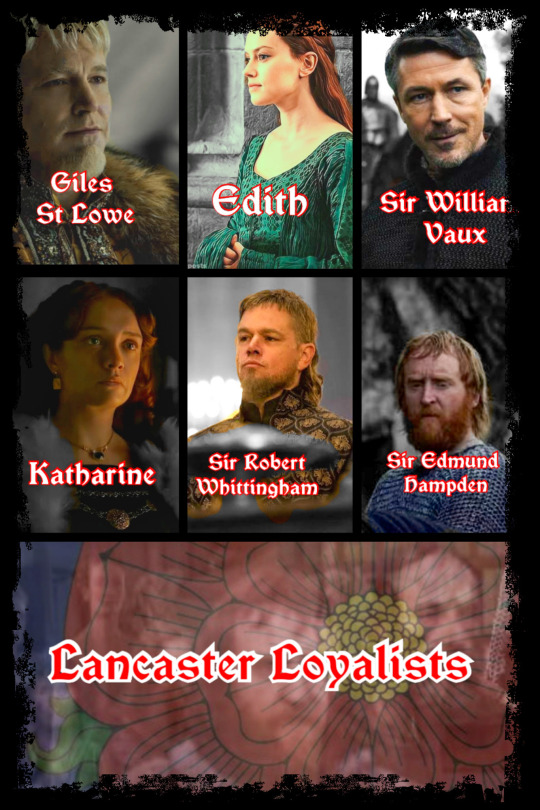
“A number of the men attendant on them in Scotland at this time had met their wives while in royal service: Giles St Lowe, Sir Robert Whittingham and Sir William Vaux were all married to women who had long served Margaret.
Whittingham's wife Katherine had been one of Margaret's 'damsels' in 1452, and he himself had served every member of the family, working as one of Henry's ushers before becoming keeper of the queen's great wardrobe and receiver-general for Prince Edward.
Giles St Lowe, who was married to another 'damsel', Edith, had been a squire in Margaret's household and an esquire of the king. Sir Edmund Hampden, another stalwart in Edinburgh, had served Margaret since she arrived in England in 1445 and in 1458 was made Prince Edward's chamberlain."
Source: Johnson, Lauren. “Shadow King: The Life and Death of Henry VI”.
#margaret of anjou#queen margaret of england#queen margaret of anjou#marguerite d'anjou#marguerite r.#queen marguerite#reine marguerite d'angleterre#plantagenet dynasty#house of lancaster#henry vi#henry vi of england#historian: lauren johnson
6 notes
·
View notes
Photo

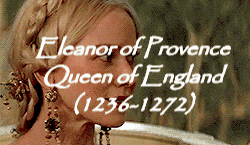








𝘚𝘰𝘮𝘦 𝘰𝘧 𝘵𝘩𝘦 𝘧𝘢𝘷𝘰𝘶𝘳𝘪𝘵𝘦 𝘲𝘶𝘦𝘦𝘯𝘴 𝘵𝘩𝘳𝘰𝘶𝘨𝘩𝘰𝘶𝘵 𝘩𝘪𝘴𝘵𝘰𝘳𝘺.
#Emma of Normandy#Katheryn Winnick#Eleanor of Provence#Naomi Watts#Marguerite de Provence#Margaret of Provence#Rebecca Ferguson#Joanna of Navarre#Joan of Navarre#Eleanor of Portugal#Eleanor of Avis#Holy Roman Empress#Empress Eleanor#Marguerite d'Anjou#Margaret of Anjou#Queen Margaret#Sophie Turner#Elizabeth of York#Elizabeth Plantagenet#Queen Elizabeth#Sophia Myles#Anne of Brittany#Anna de Bretagne#Queen Anne#La reine Anne#la bonne reine anne#Scarlett Johanson#Maria of Trastamara#Maria of Aragon#Maria of Castille
48 notes
·
View notes
Quote
And on the Monday after noon the Queen came to him, and brought my Lord Prince with her. And then he asked what the Prince's name was, and the Queen told him Edward; and then he held up his hands and thanked God thereof. And he said he never knew him till that time, nor wist not what was said to him, nor wist not where he had be whiles he hath be sick till now. And he asked who was godfathers, and the Queen told him, and he was well apaid.
Edmund Clere to John Paston I, 9 January 1455 (Firsthand description of Henry VI's meeting his infant son for the first time after coming out of his "catatonic state" [unknown illness which remains a mystery])
#The Paston Letters#I love reading other people's mail#Especially when it gives me adorable tidbits about Henry VI meeting his baby son#Henry VI#Queen Margaret#Margaret of Anjou#Marguerite d'Anjou#Edward of Westminster#Edward of Lancaster#Edward Prince of Wales#Edmund Clere#John Paston I#9 January 1455
8 notes
·
View notes
Photo
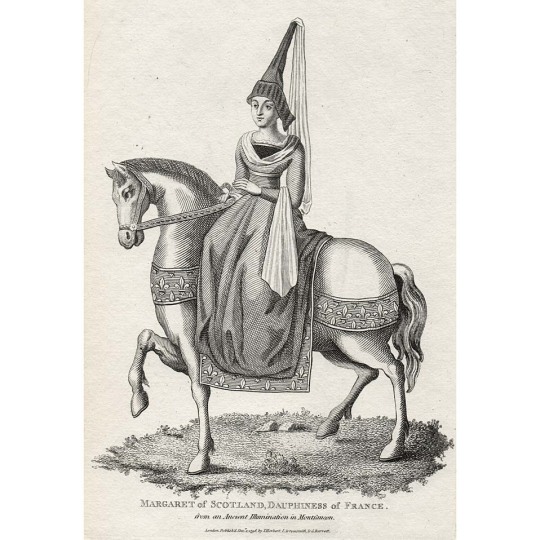



Margaret Stewart, “Margaret of Scotland” “Dauphine of France” died in Châlons, France on August 16th 1445, she was just 20.
Born in Perth on 24th December 1424 Margaret Stewart was the firstborn child of James I of Scotland and Joan Beaufort.
Aged 11 Margaret was married off to Louis XI son of Charles VII and Maria d'Anjou in June 1436 in Tours Cathedral. As you would expect this marriage had more about the Auld Alliance than any love story.
Margaret sailed for France in March 1436, and she was escorted by some of the greatest Scottish nobles. She entered Poitiers, where a child dressed as an angel crowned her with a wreath of flowers, he husband, Louis in Tours was about 2 years her senior at 13, they wed on 25th June 1436 and she became the Dauphine of France.
The marriage of course was not consummated right away and she was taken into the household of the French Queen, Marie of Anjou, where she reportedly saw very little of her husband, whose aversion of her was remarked upon by contemporaries, the French knew her as Marguerite d'Écosse It is said that her marriage to Louis was so wretched that when she died at age 20, her parting words were: "Oh! fie on life! Speak to me no more of it.
She is said to have devoted much of her time to writing, and she was criticised by doctors for it, who claimed that her “poetic overwork” may have attributed to her death. Unfortunately, none of her works survive to this day. Reportedly, Louis ordered that all her papers be destroyed.
She was treated with kindness by King Charles VII and his wife, and when she died on this day 1445, there was a great outpouring of grief. Her two sisters, Eleanor and Joan, were on their way to France at the invitation of Marie of Anjou, but they arrived just a few days after Margaret’s death.
An unidentified Scot wrote of Margaret,
“Alas that I should have to write what I sadly relate about her death…I wrote write this saw her every day, for the space of nine years, alive and enjoying herself in the company of the King and Queen of France. But then…I saw her, within the space of eight days, first in good health and then dead and disembowelled and laid in a tomb at the corner of the high altar, in the cathedral church of Châlons.”
She is buried in Saint-Laon church in the French department of Deux-Sèvres, a canopy over her tomb is all that remains after the destruction during the French Revolution, which was similar to the events after The Scottish Reformation, which saw our country lose so much of or treasures and history. a modern floor plaque and grill have been added her coffin can be seen though the grill.
There is a lot more history to read about the marriage and her life here from the excellent Freelance History Writer
https://thefreelancehistorywriter.com/…/margaret-stewart-o…/
17 notes
·
View notes
Photo
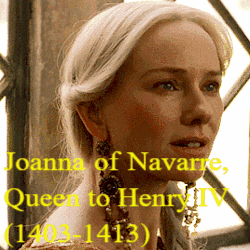
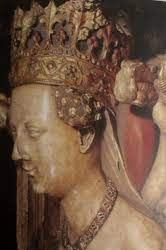

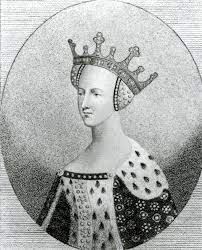


『 ♛ 𝘓𝘢𝘯𝘤𝘢𝘴𝘵𝘳𝘪𝘢𝘯𝘴 𝘘𝘶𝘦𝘦𝘯𝘴 𝘰𝘧 𝘌𝘯𝘨𝘭𝘢𝘯𝘥 ♛ 』
(𝟣𝟦𝟢𝟥-𝟣𝟦𝟨𝟣)
1. 𝑁𝑎𝑜𝑚𝑖 𝑊𝑎𝑡𝑡𝑠 𝑎𝑠 𝐽𝑜𝑎𝑛𝑛𝑎 𝑜𝑓 𝑁𝑎𝑣𝑎𝑟𝑟𝑎, 𝑄𝑢𝑒𝑒𝑛 𝑐𝑜𝑛𝑠𝑜𝑟𝑡 𝑡𝑜 𝐾𝑖𝑛𝑔 𝐻𝑒𝑛𝑟𝑦 𝐼𝑉.
2.𝐶𝑙𝑒́𝑚𝑒𝑛𝑐𝑒 𝑃𝑜𝑒́𝑠𝑦 𝑎𝑠 𝐾𝑎𝑡𝘩𝑒𝑟𝑖𝑛𝑒 𝑜𝑓 𝑉𝑎𝑙𝑜𝑖𝑠, 𝑄𝑢𝑒𝑒𝑛 𝑐𝑜𝑛𝑠𝑜𝑟𝑡 𝑡𝑜 𝐾𝑖𝑛𝑔 𝐻𝑒𝑛𝑟𝑦 𝑉.
3. 𝐷𝑎𝑖𝑠𝑦 𝑅𝑖𝑑𝑙𝑒𝑦 𝑎𝑠 𝑀𝑎𝑟𝑔𝑎𝑟𝑒𝑡 𝑜𝑓 𝐴𝑛𝑗𝑜𝑢, 𝑄𝑢𝑒𝑒𝑛 𝑐𝑜𝑛𝑠𝑜𝑟𝑡 𝑡𝑜 𝐾𝑖𝑛𝑔 𝐻𝑒𝑛𝑟𝑦 𝑉𝐼.
#House of Lancaster#Lancaster#Lancastrians#Plantagenets#Plantagenet Dynasty#Queens consorts#Lancastrians queens#Queen Joanna#Queen Katherine#Queen Margaret#Joanna of Navarra#Joan of Navarra#Jeanne de Navarre#Jeanne d'Évreux#Jeanne de Bretagne#Katherine of Valois#Katherine de Valois#Margaret of Anjou#Marguerite d'Anjou#red queens#Naomi Watts#Clémence Poésy#daisy ridley#fan cast#edit
34 notes
·
View notes